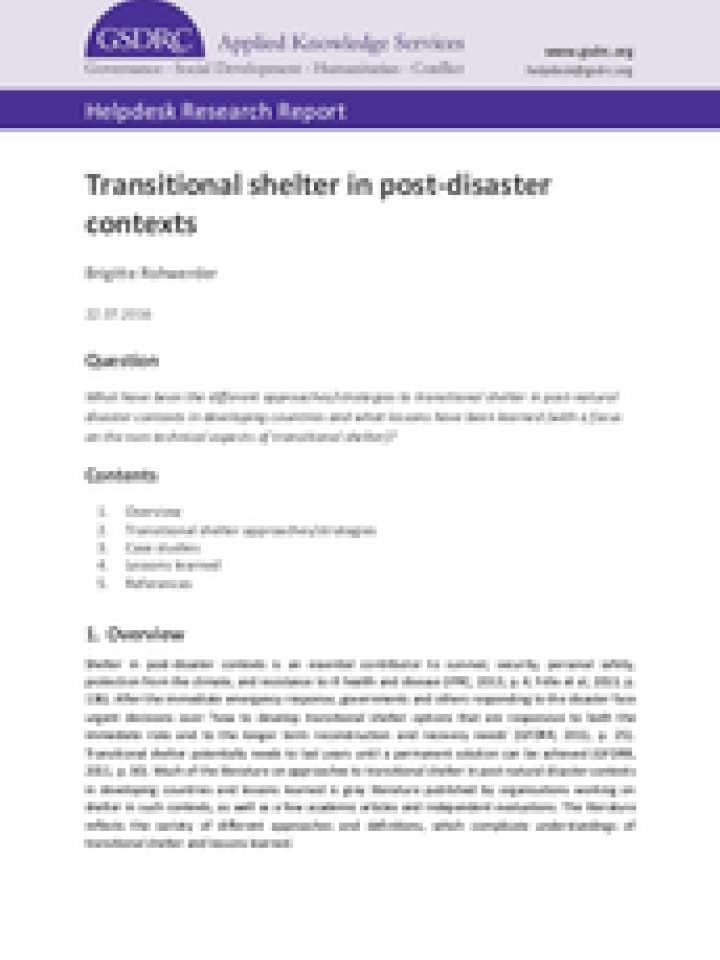Transitional shelter in post-disaster contexts
This paper discusses various strategies and approaches on post-disaster shelter construction, especially regarding transitional shelter, and presents case studies from Bangladesh, India, Pakistan, Indonesia, the Philippines and Haiti.
The lessons learned provided in this paper are the following ones:
- Knowledge of good, safe building practices is required so that houses incorporate disaster risk reduction measures.
- Transitional shelter is cost-effective over time if implemented correctly, and provides good opportunities for scale-up by using common local and regional materials.
- Meaningful engagement with affected communities/individuals is important to ensure local leadership and that design and implementation are context-appropriate and the needs of the marginalised and vulnerable groups are considered.
- Pressure should not be taken off the permanent housing reconstruction effort.
- The integration of other sectors/issues, such as livelihoods, Water Sanitation and Hygiene (WASH) and transport, is important for the success of the transition.
This document is available under an Open Government Licence for public sector information.
Explore further
